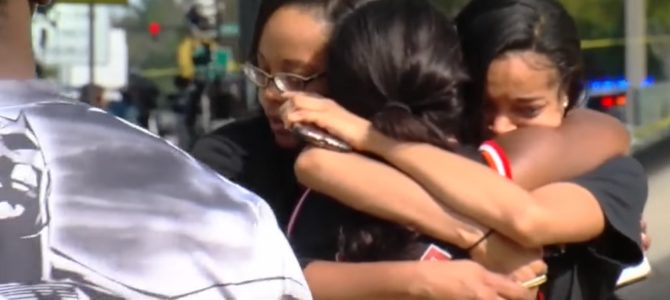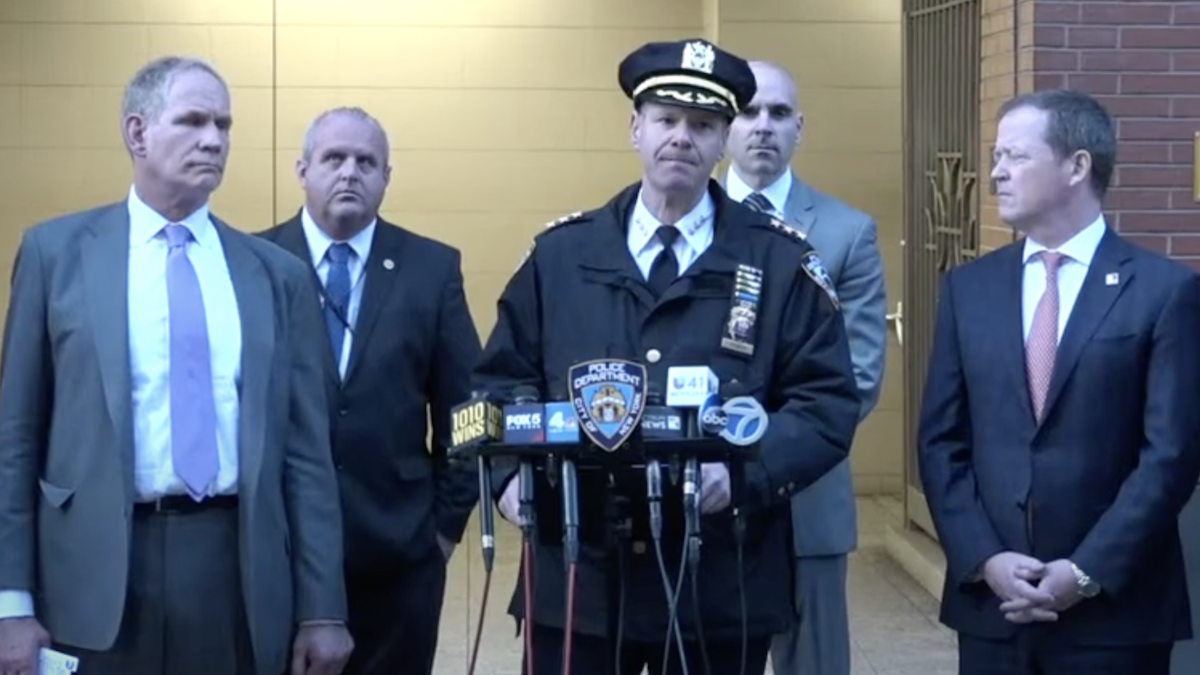
Following the shooting on February 14, 2017 at Marjory Stoneman Douglas High school in Parkland, Florida, President Trump established the Federal Commission on School Safety to find out why these school shootings are happening and what can be done to prevent them.
In fact, evidence from the Parkland shooting now shows that if the Broward County Sheriff’s office had correctly done their job, the shooter could have been apprehended for other crimes before he ever was able to show up at Marjory Stoneman. This weekend Florida Gov. Ron DeSantis suspended Sheriff Scot
Israel for doing such a poor job.
Effective immediately, I am officially suspending Broward County Sheriff Scott Israel for his repeated failures, incompetence and neglect of duty. https://t.co/tkHzxTHhjH
— Ron DeSantis (@GovRonDeSantis) January 11, 2019
On December 18, the commission presented their 180-page report dissecting this incident and similar others to the president. It focused on three areas: preventing school violence, protecting students and teachers, and how to respond and recover from acts of violence. It’s well-researched, nuanced, and well worth a read. Here are five key findings.
1. Use a Local Approach, Not Sweeping Federal Laws
This report found, through intense and thorough research that included field visits across the country, that this nation is too diverse for broad, sweeping federal laws to effectively enforce school safety. The report not only “identifies local, state, and federal policy for lawmakers and local officials to consider” but also examined other aspects like mental health and the importance of a positive school community, including suggestions to prevent physical and cyber bullying.
This is quite different from the typical narrative that follows school shootings. Usually, members of the press, some lawmakers, and occasionally law enforcement will call for a ban on guns, requirements for every school to hire security officers, or some other broad concept. The report says:
There is no universal school safety plan that will work for every school across the country. Such a prescriptive approach by the federal government would be inappropriate, imprudent, and ineffective. We focused instead on learning more about, and then raising awareness of, ideas that are already working for communities across the country. That is why the Commission’s work and recommendations focus on a variety of school sizes, structures, and geographic locations. The federal government can play a role in enhancing safety in schools. However, state legislators should work with local school leaders, teachers, parents, and students themselves to address their own unique challenges and develop their own specific solutions. What may work in one community may or may not be the right approach in another. Each local problem needs local solutions. Rather than mandate what schools must do, this report serves to identify options that policymakers should explore.
While this may sound obvious to proponents of small government, the concept of using local government to create change––change that will be different in every part of the country––will be new to some, and the importance of this idea is hard to overstate.
2. Address Mental Health Issues
The report spent about 20 pages trying to delve into how to prevent school violence by addressing mental health, calling the “lack of mental health professionals in schools” a consistent theme. Following most school shootings, the media and Democrats often dance around this issue or even push it off to the side. even though the fact that the perpetrator struggled with mental health issues almost always comes to light later.
A U.S. Department of Education and U.S. Secret Service analysis found that as many as one-quarter of individuals who committed mass shootings had been in treatment for mental illnesses, and more than three-quarters had symptoms of a mental illness prior to the time of the shooting. The report stated:
Similar factors and signs existed in the case of the Parkland shooting, which was allegedly committed by a transition-aged youth. The alleged shooter had experienced numerous instances of difficulties in the community and with his family, including violence against animals and toward his mother and others. The aforementioned social isolation also appeared to be a factor in the Parkland case. The alleged shooter was reported to be lonely, ostracized, and volatile.
It encouraged schools not to downplay the importance of mental health, acknowledging that it is a challenge to identify and even harder to help. Still, they encouraged school administrators to use everything at their disposal, from counselors, teachers, parents, and health-care providers, to identify children who might be at risk of hurting themselves or others.
3. Take Threats More Seriously
With the shooting in Parkland, as with many other shootings, there were warning signs of impending violence. Typically, a child who is a star student, kind to others, and engaged in school activities does not randomly murder his peers in cold blood. Often, the study found, school shooters share characteristics including that they make hints and leave clues regarding impending plans to hurt others.
The commission said that following the Columbine shooting way back in 1999, the Secret Service partnered with the Department of Education to study school violence. “One of the study’s most significant findings was that, prior to most attacks, other students knew of the attackers’ plans, yet most did not report it to an adult.”
The report encouraged schools to help students report suspicious activity or rumors anonymously, and for school administrations to organize a “threat assessment” team. The commission urged schools nationwide to determine ways to pay closer attention children’s behavior, particularly the ones who come from a difficult home life, struggle with academics, get bullied in school, or have few friends. While this seems more feasible in rural areas with smaller schools, at a school like Marjory Stoneman, which boasted several buildings in just one campus, this task will be much harder.
The report encouraged people who think students might be plotting something with a firearm to take advantage of “extreme risk protection order” (ERPO) laws, also known as gun violence protection orders, risk warrants, or red flag laws, that exist in many states.
Again, this aspect, while obvious to some (particularly in conservative media or even law enforcement) is largely downplayed directly following school shootings, and guns are immediately blamed rather than school officials, administrations, parents, and others who did not heed the signs. This report helped identify those things and urged schools to be more aware and more proactive.
4. Don’t Just Focus On Guns
Following school shootings, the media tends to focus primarily on guns and gun control. While the commission’s report does not leave out the many nuances of firearms––pros and cons––as they pertain to school safety, the 200-page report does not focus primarily on guns. This alone should communicate something to the mainstream media, which tends to focus solely on that to the exclusion of any other factors.
The report states the obvious: Schools need to enhance their specific safety mechanisms, which include beefing up security when possible.
There is no doubt planning and training helps prepare police officers and first responders to deal with active shooters. However, because active shooter incidents are often over before law enforcement arrives on the scene, onsite personnel must be prepared to deal with an active shooter attack in the absence of trained crisis response officers.
The report says ten states allow “school staff to possess or have access to firearms at school.”
Likewise, the Marjory Stoneman Commission, which recently released their specific analysis of just the Parkland shooting, recommended arming teachers and increasing spending on mental health resources. The 15-member panel also concluded several security breaches and protocol issues within the school system and local law enforcement were partially to blame for the massacre.
5. Obama School Discipline Policies Made Violence Worse
Unbeknownst to many fans of President Obama, when he held office he issued a policy that placed an “emphasis on tracking school disciplinary actions by race.” That guidance suggested that neutral school discipline policies might violate federal law if it looked like certain racial groups committed more crimes, violence, or other school offenses.
If this happened — i.e., a larger number of black children than white children were suspended — Obama’s guidelines suggested said schools might lose federal funds. I’m embarrassed to admit I was unaware of this policy altogether, and am surprised there was not more pushback.
Either way, the commission found that the threat of these investigations likely had a strong, negative impact on school discipline and safety. Obama’s guidelines “sent the unfortunate message that the federal government, rather than teachers and local administrators, best handles school discipline. As a result, fearful of potential investigations, some school districts may have driven their discipline policies and practices more by numbers than by teacher input.”
The commission emphasizes that the Trump administration “is committed to ensuring that educational programs and policies are administered in a fair, equitable, and racially neutral manner that does not result in unlawful discrimination.” They conclude that “Where well-meaning but flawed policies endanger student safety, they must be changed.” Bravo.









